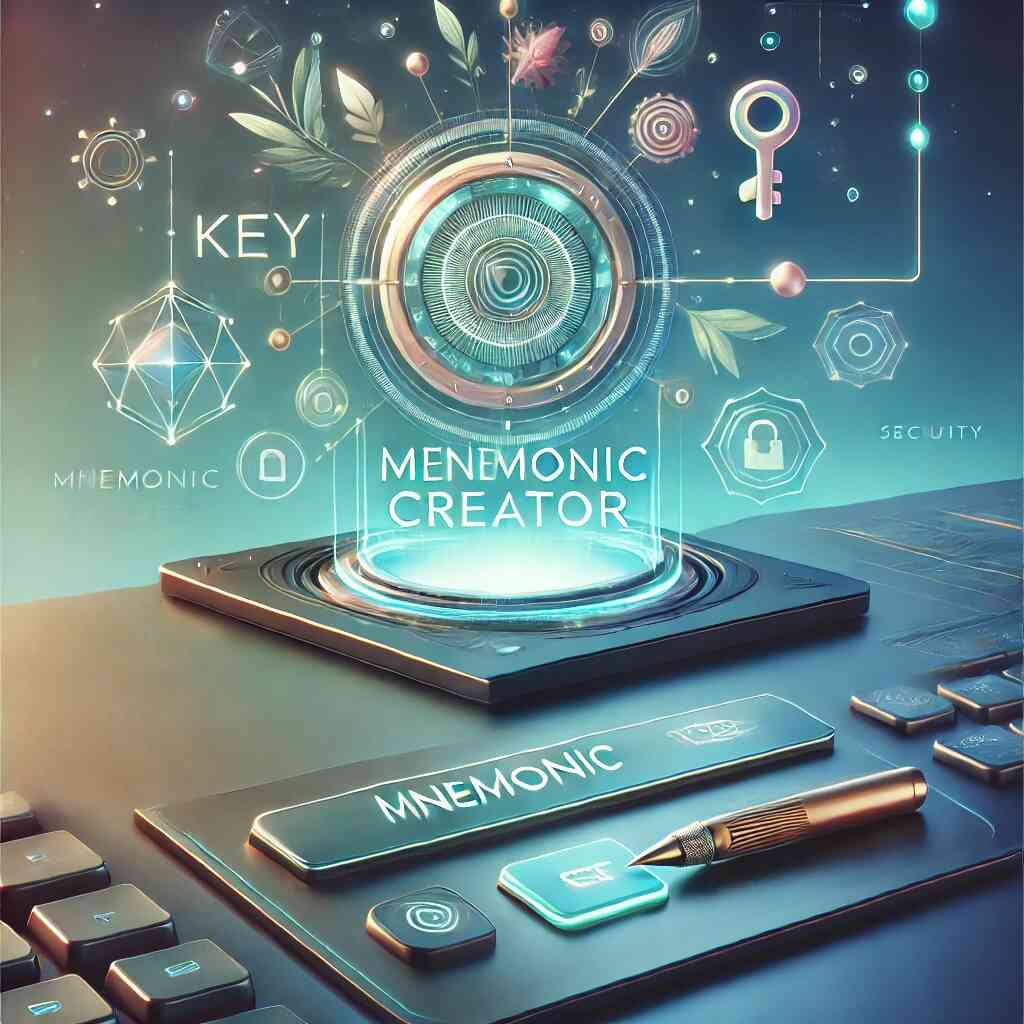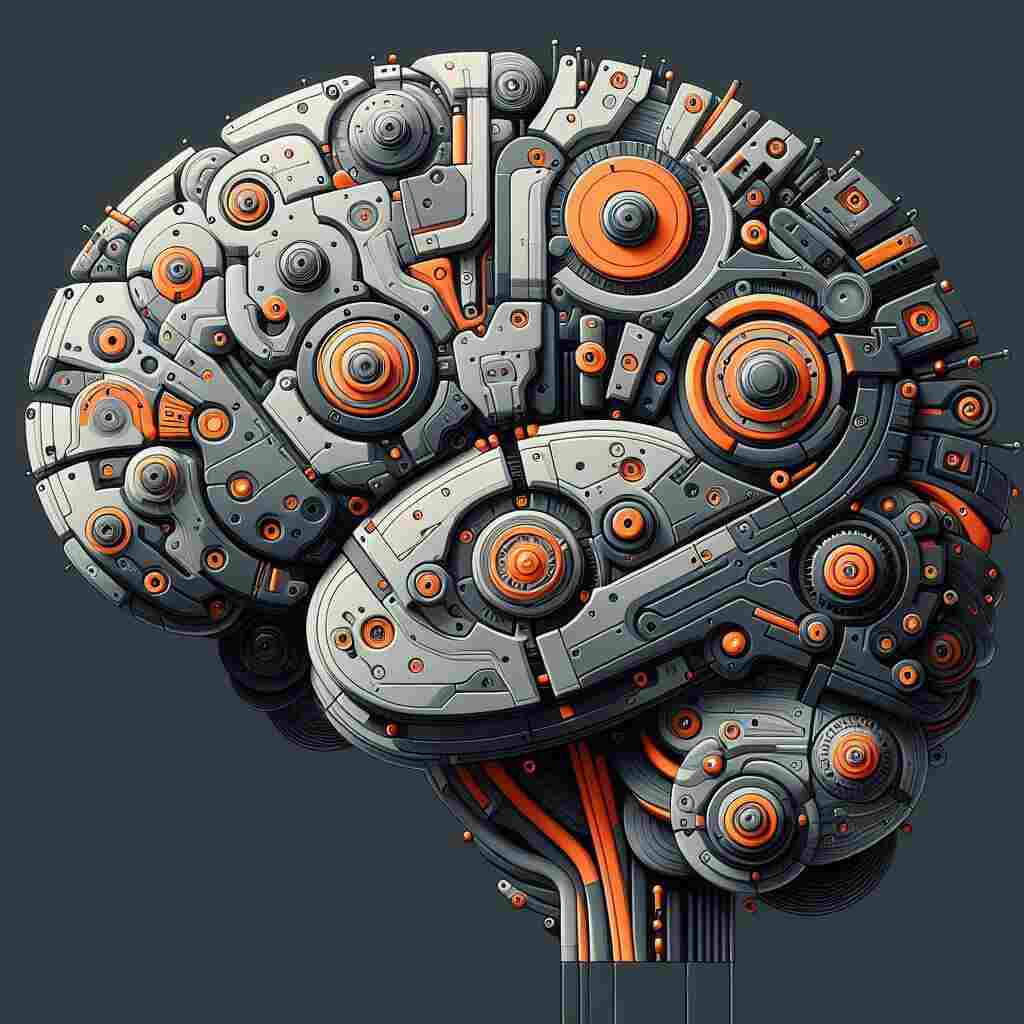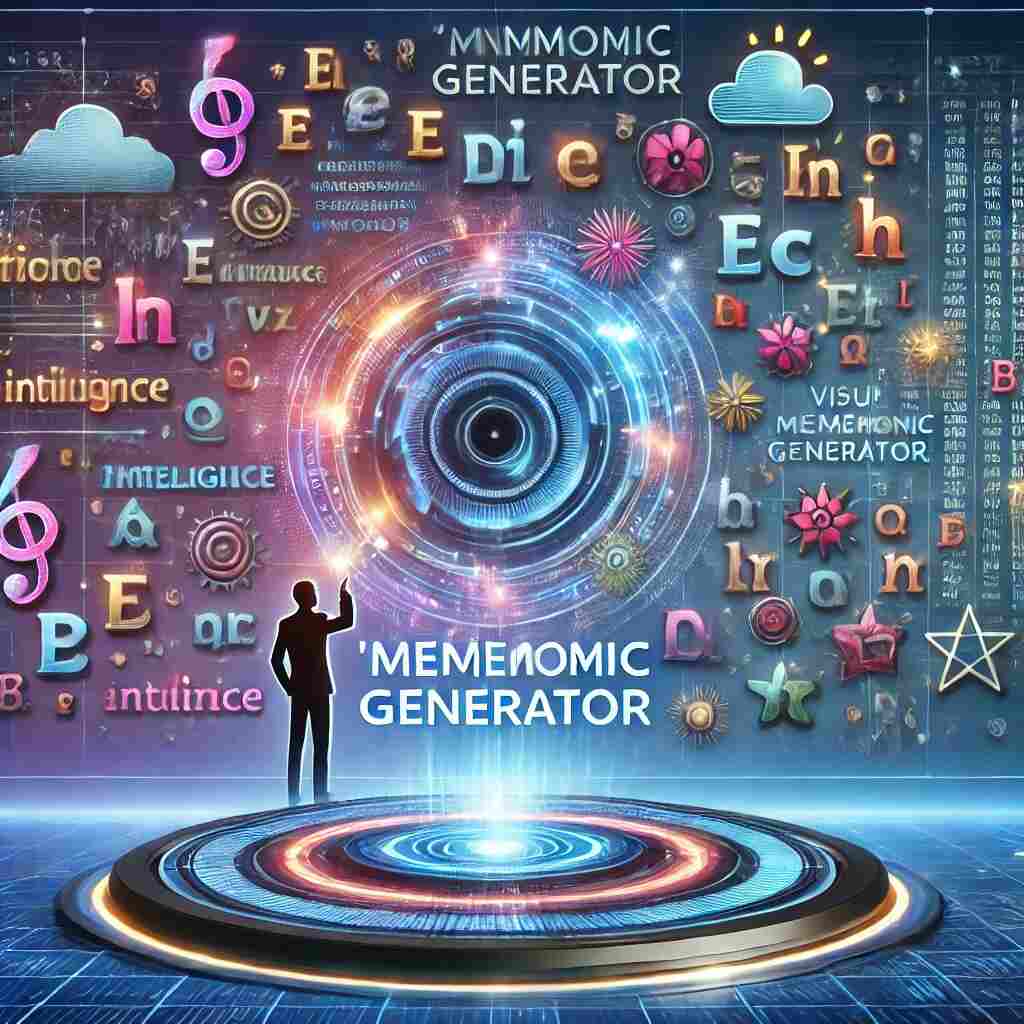Table of Contents
ToggleHow to Create Effective Mnemonic Creator Easily
Remembering information can be a challenge. Mnemonic devices can make this task easier.
But what are mnemonic devices? They are tools that aid memory.
They can be particularly useful for students, educators, and professionals. Anyone looking to enhance their memory can benefit from them.
A mnemonic creator or generator can help create these devices. It simplifies the process and makes it more efficient.
This guide will provide insights into creating effective mnemonic devices. It will also explore the use of mnemonic creators and generators.
Join us as we delve into the world of mnemonics. Let’s enhance our memory together.
Understanding Mnemonics and Their Importance
Mnemonic devices are vital tools for boosting memory retention. They work by linking new information to something familiar, making recall easier. This connection helps us remember complex details.
Mnemonics serve a vital function in the process of learning and acquiring new knowledge. They transform what can sometimes be a tedious and overwhelming task into something that is more enjoyable and manageable.
When we break down information and use memory aids, it’s much easier for people to remember it later.
This is one of the main reasons why mnemonics are used in schools and workplaces.
They provide a simple yet effective method for organizing and retaining large volumes of information.
Understanding how mnemonics work is important. It can help us create better ways to remember things. This can make learning easier and more effective.
Types of Mnemonic Devices
Mnemonic devices come in various forms, each with unique benefits. These tools cater to different learning styles and memory needs. Understanding the types allows you to choose the best fit for your requirements.
Here’s a list of common mnemonic devices:
- Acronyms: Formed by taking the first letter of each word in a phrase.
- Acrostics: Sentences where the first letters spell out key points.
- Rhymes and Songs: Use rhythm and melody to make recall easier.
- Visualization: Linking images with information to boost memory.
Each type provides a different way to process information. While acronyms and acrostics aid quick recall, rhymes and songs engage audio learners. Visualization caters to those who learn visually. By using the right type, you enhance your memory by aligning it with your natural learning style.
The Science Behind Mnemonics
Mnemonics work by stimulating our brain’s natural ability to recognize patterns. They create connections between new information and what we already know. This linkage helps us retrieve information efficiently when needed.
Research shows that mnemonics use both sides of the brain. Techniques like images, rhymes, and connections involve many parts of the brain. This helps improve memory and recall. Knowing how mnemonics work can help you create better memory tools. Using these ideas can change how you learn.
How Mnemonic Creators Work
Mnemonic creators or generators are tools that assist in crafting personalized memory aids. They provide templates and suggestions based on the input details you provide. This automation makes it easier to generate mnemonic devices without starting from scratch.
These tools often incorporate algorithms to analyze the input text and suggest suitable mnemonic techniques. Whether you need an acronym, rhyme, or visualization, they offer multiple options. The key is to choose a tool that matches your specific learning needs and preferences. Mnemonic creators can significantly streamline the process of developing effective memory aids.
Benefits of Using a Mnemonic Generator
Using a mnemonic generator can greatly enhance memory retention. These tools simplify the creation process by offering a structured framework. They save time by quickly generating a variety of mnemonic options tailored to your needs.
Moreover, mnemonic generators often help in managing complex information. For subjects requiring intricate memorization, like science or history, they are invaluable. By providing diverse mnemonic formats, these tools cater to different learning styles. This adaptability ensures that learners maximize their memory potential efficiently.
Crafting Your Own Mnemonics: A Step-by-Step Guide
Creating your mnemonics can be both rewarding and effective. Start by selecting the specific information you want to remember. Understand the key elements, focusing on the most significant details to simplify your task.
Next, identify the type of mnemonic device that suits your content. Consider using acronyms, rhymes, or vivid imagery. Tailor your choice to the nature of the information and your personal learning style.
Follow these steps to craft your mnemonic:
- Break the information into smaller, manageable pieces.
- Choose keywords or phrases that trigger memory.
- Use visualization to connect these ideas creatively.
- Make connections with existing knowledge or emotions.
- Repeat the mnemonic regularly to reinforce memory.
Personalization is crucial in this process. Adapt each mnemonic to your preferences, making it meaningful and memorable. Over time, with consistent practice, these mnemonics can significantly enhance your retention capabilities.
Personalizing Mnemonics for Better Recall
To make mnemonics truly effective, personalization is key. Tailor your mnemonic to your experiences and preferences. By doing this, you create a connection with the material that makes it easier to recall.
Incorporate personal elements like favorite colors, hobbies, or memorable events. This unique touch ensures the mnemonic resonates with you and stands out. The more personal and distinct the mnemonic, the more likely you are to remember it. Embracing personalization transforms mnemonics into powerful and engaging memory tools, tailored to fit your learning style.
Mnemonics in Educational and Professional Settings
Mnemonics play a crucial role in education. Teachers use them to help students memorize complex topics. Subjects like history, science, and languages benefit greatly from mnemonic devices.
In professional settings, mnemonics aid in retaining vital information. Fields like medicine, law, and technology rely on quick recall. Mnemonics ensure that professionals can access essential data rapidly. They become indispensable tools in scenarios where accuracy and speed are key.
Overcoming Challenges with Mnemonic Devices
Creating effective mnemonics isn’t always straightforward. One common challenge is making them memorable yet simple. An overly complicated mnemonic defeats its purpose and hinders recall.
Another hurdle is personalization. A mnemonic must resonate personally to be truly effective. Tailoring mnemonics to individual preferences or experiences enhances their impact. Overcoming these challenges involves creativity and practice, improving both memory and learning processes.
The Future of Mnemonic Creation: Trends and Tools
The future of mnemonic creation is bright and innovative. Technology plays a pivotal role, with apps and software simplifying the process. These tools offer interactive and engaging ways to build mnemonics.
Moreover, artificial intelligence is stepping in to enhance personalization. AI can analyze users’ preferences and learning styles, crafting mnemonics that cater to individual needs. As technology evolves, mnemonic strategies will likely become more sophisticated, aiding learners in both educational and professional realms. Embracing these advancements promises to improve memory retention for diverse audiences worldwide.
Conclusion: Integrating Mnemonics into Your Learning Routine
Mnemonics can transform the way you learn and remember. By incorporating them into your daily study habits, you’ll find information easier to recall. Consistent practice with mnemonics can make learning more effective and enjoyable. Embrace these techniques to enhance your memory skills seamlessly.

Mnemonic Device Creator
Mnemonic Device Creator
Mnemonic devices are techniques used to aid memory retention. The word “mnemonic” comes from the Greek word mnemonikos, meaning “of memory.” These devices work by associating new information with something familiar, making it easier to recall. They can take various forms, such as acronyms, rhymes, visual imagery, or even songs. The idea is to create a mental “hook” that helps you retrieve the information when needed.
Historical Background of Mnemonics
The use of mnemonic devices dates back to ancient civilizations. The Greeks and Romans developed complex systems of memory enhancement, often employing elaborate techniques. These methods were used by orators to memorize long speeches and by scholars to retain vast amounts of information. The "method of loci" is an old memory technique. It involves imagining placing items in certain spots in a made-up space. This historical context underscores the timeless value of mnemonics in human learning. Learn more about the history of memory techniques.
Psychological Basis of Mnemonics
Mnemonic devices leverage cognitive psychology principles, particularly those related to memory and learning processes. By creating associations, mnemonics tap into the brain’s ability to form and recall connections. This engagement with multiple cognitive pathways—such as visual, auditory, and linguistic—enhances the encoding and retrieval of information. Understanding how mnemonics work can help learners see their value. This knowledge allows them to use mnemonics based on their own strengths. Explore how mnemonics enhance cognitive pathways.
Common Misconceptions about Mnemonics
Despite their effectiveness, mnemonic devices are often misunderstood. Some believe they are only useful for rote memorization, ignoring their potential to foster deeper understanding. Others think mnemonics are mere tricks or gimmicks, rather than legitimate learning tools. Addressing these misconceptions is crucial for fully realizing the potential of mnemonics in diverse educational settings. Uncover the truth about mnemonics.
Types of Mnemonic Devices
Mnemonic devices come in many shapes and sizes. Understanding their different types can help you choose the right one for your learning needs. Here are some common types:
Acronyms and Acrostics
Acronyms are formed by taking the initial letters of a series of words and creating a new word. This technique is widely used in various fields, from science to history. Acrostics, on the other hand, involve forming sentences where the first letter of each word represents an item in a list. Both methods serve as effective memory aids by simplifying complex information into easily recallable formats. Learn how to create your own acronyms and acrostics.
Rhymes and Songs
Rhymes and songs capitalize on the brain’s affinity for rhythm and melody. This type of mnemonic is particularly effective for auditory learners, as the musical elements enhance memory retention. Educational songs and rhymes have been used in classrooms for many years. They help teach everything from the alphabet to math formulas. These mnemonics stick in the mind, often resurfacing effortlessly when needed. Discover more about auditory mnemonics.
Visual Imagery and Storytelling
Visual imagery involves creating vivid mental pictures to represent information. Storytelling, a related technique, weaves information into a narrative. Both methods engage the brain’s visualization capabilities, making abstract or complex data more tangible. By transforming information into images or stories, learners create meaningful connections that enhance recall. Read about visual learning strategies.
Chunking and Grouping
Chunking and grouping break down large amounts of information into smaller, more manageable units. This strategy is particularly useful for sequences such as phone numbers or historical dates. By organizing information into clusters, learners reduce cognitive load and improve memory retention. Chunking is a fundamental concept in cognitive psychology, reflecting the brain’s preference for processing smaller bits of data. Learn how to use chunking effectively.
The Science Behind Mnemonics
Mnemonic devices leverage the brain’s natural ability to create associations. When we connect new information to something we already know, we create stronger neural connections. This helps us remember that information more easily later. This process is known as “elaborative encoding.” By adding layers of meaning to the material, we enhance our memory retention and recall capabilities. Understand elaborative encoding in depth.
Neural Mechanisms of Memory
The human brain is a complex network of neurons, and memory formation involves specific neural pathways. Mnemonics enhance these pathways by increasing the synaptic connections between neurons. This neural activation is further strengthened when mnemonics engage multiple senses, making the learning experience more robust. Understanding these mechanisms can help learners harness the full potential of mnemonic devices. Explore how mnemonics shape neural pathways.
The Role of Emotion in Mnemonics
Emotions play a significant role in memory and learning. Mnemonic devices that evoke emotional responses tend to be more memorable. This is because emotional experiences activate the amygdala, a brain region involved in processing emotions and memory. By integrating emotional elements into mnemonics, learners can create more powerful memory aids. Read about the emotional impact of mnemonics.
Cognitive Load Theory and Mnemonics
Cognitive load theory suggests that our working memory has limited capacity. Mnemonics help manage cognitive load by simplifying and organizing information. By converting complex data into manageable forms, mnemonics reduce the strain on working memory, allowing learners to focus on understanding and retaining information. Learn how mnemonics reduce cognitive strain.
Creating Your Own Mnemonic Devices
Creating mnemonic devices tailored to your learning style can be a game-changer. Here’s a step-by-step guide to help you get started:
Step 1: Identify the Key Information
Begin by identifying the information you want to remember. Break it down into its essential components. Whether it’s a list of scientific terms or historical dates, clarity is crucial. Learn more about breaking down information.
Step 2: Analyze Your Learning Style
Understanding your learning style is essential in choosing the right mnemonic technique. Are you a visual learner who benefits from images, or an auditory learner who remembers through sound? Discover strategies based on learning styles.
Step 3: Choose a Mnemonic Type
Select a mnemonic type that suits the information and your learning preference. Tailoring the mnemonic to your learning style can significantly enhance its effectiveness. Find the best mnemonic type for you.
Step 4: Get Creative
Use your imagination to craft a memorable mnemonic. Creativity not only makes the mnemonic more engaging but also strengthens the associative pathways in the brain. Get tips for crafting creative mnemonics.
Step 5: Practice and Reinforce
Practice using your mnemonic device regularly. Repetition strengthens neural connections, making recall more automatic. Explore the benefits of regular practice.
Step 6: Evaluate and Adjust
If your mnemonic isn’t working as well as you’d hoped, don’t hesitate to adjust it. Flexibility ensures that your mnemonic remains relevant and useful over time. Learn how to tweak mnemonics effectively.
Examples of Effective Mnemonic Devices
Planetary Order Mnemonics
Use the acrostic, “My Very Educated Mother Just Served Us Noodles,” to recall the order of the planets: Mercury, Venus, Earth, Mars, Jupiter, Saturn, Uranus, and Neptune. Read more about planetary mnemonics.
Biological Classification Mnemonics
Remember the taxonomic ranks—Kingdom, Phylum, Class, Order, Family, Genus, Species—with the sentence, “King Philip Came Over For Good Soup.” Explore mnemonics in biology.
Musical Note Mnemonics
The treble clef notes on the lines can be remembered with “Every Good Boy Does Fine” (EGBDF). Learn about musical mnemonics.
The Role of Mnemonics in Learning Strategies
Mnemonic devices are a valuable addition to any learning strategy. They complement other study techniques by adding an element of fun and creativity to the learning process. Enhance your study routine with mnemonics.
Boosting Memory Retention
Mnemonics facilitate deeper encoding of information, making recall more reliable over time. Learn how mnemonics aid retention.
Improving Focus and Concentration
The creative process of developing mnemonics can enhance concentration and focus. Discover how mnemonics improve focus.
Increasing Motivation and Enjoyment
Mnemonics reduce the monotony of rote memorization, making learning more enjoyable. Find joy in learning with mnemonics.
Encouraging Active and Engaged Learning
By creating your own mnemonics, you actively engage with the material, promoting deeper understanding. Read about active learning with mnemonics.
Conclusion
Mnemonic devices are powerful tools for enhancing memory and learning. By knowing the different types and the science behind them, you can improve your study routine. You can also learn how to create your own methods. This will help you become more efficient. Embrace mnemonics to improve your memory and cultivate a lifelong love of learning. With the right techniques, learning becomes not just a task but a rewarding journey. Dive into the world of mnemonics and discover the joy and power of mastering information with ease and creativity.

Mnemonic Generators
The Ultimate Guide to Mnemonic Generators and How to Use Them
Mnemonics are memory aids that make it easier to remember information by associating it with simple phrases, words, or images. One popular way to create mnemonics is through a mnemonic generator, which automates the process of turning letters or concepts into memorable phrases. In this blog post, we’ll explore how to create mnemonics manually and using tools, how mnemonic generators work, and how to maximize their potential for learning.
What Is a Mnemonic Generator?
A mnemonic generator is a tool or software designed to help you create mnemonics automatically. It works by taking input, such as a series of letters, words, or concepts, and generating a memorable phrase, acronym, or sentence based on those inputs. These generators are commonly used in education, personal development, and professional settings to simplify the process of memorizing complex information.
Related Topics:
How to Create Mnemonics Manually
Creating your own mnemonics can be a rewarding process. Here’s a step-by-step guide:
1. Understand the Information
Identify the key elements you need to remember. For example, if you’re memorizing a sequence of planets, focus on the specific names (Mercury, Venus, Earth, etc.).
2. Break It Down
Simplify the information into manageable pieces. If you’re dealing with a sequence of letters or terms, write them out clearly.
3. Choose a Mnemonic Type
Select the type of mnemonic that best suits your learning style:
-
Acronyms: Form a word using the initial letters (e.g., NASA).
-
Acrostics: Create a sentence where each word starts with the letters you’re trying to remember (e.g., “My Very Educated Mother Just Served Us Noodles” for the planets).
-
Rhymes or Songs: Add rhythm or melody.
-
Visual Imagery: Create vivid mental images to associate with the concepts.
4. Get Creative
Use humor, emotion, or familiarity to make your mnemonic stick. For example, a quirky or humorous sentence is often easier to remember than a straightforward one.
5. Practice Regularly
Repeat your mnemonic until it becomes second nature. Test yourself to ensure you’ve retained the information.
How to Create a Mnemonic Device
A mnemonic device is any method or tool that aids memory. Follow these steps to craft a device:
-
Analyze Your Needs: Determine whether you need to memorize a list, a sequence, or a complex concept.
-
Incorporate Personal Touches: Use words or phrases that have personal meaning to you.
-
Utilize Patterns: Rhythms, sequences, or familiar patterns help with recall.
-
Experiment with Formats: Try different mnemonic forms to see what works best.
Using a Mnemonic Generator from Letters
If you’re starting with a string of letters, a mnemonic generator can quickly transform them into a memorable phrase. For instance, if your letters are H O P E, a generator might suggest, “Help Other People Everyday.” Here’s how to use such tools:
-
Input Your Letters: Enter the letters or acronym you want to remember.
-
Select a Style: Choose whether you want a sentence, acronym, or rhyme.
-
Review Suggestions: Evaluate the output and pick the most meaningful option.
-
Personalize It: Adjust the generated mnemonic to better suit your preferences or needs.
Popular Applications of Mnemonic Generators
-
Education: Helping students memorize scientific terms, historical dates, or formulas.
-
Professional Settings: Remembering procedural steps, processes, or meeting agendas.
-
Personal Development: Tracking goals, habits, or daily affirmations.
Explore Tools:
Benefits of Mnemonic Words
Mnemonic words, like acronyms or key terms, serve as anchors for recalling larger pieces of information. For example, the word HOMES helps you remember the Great Lakes (Huron, Ontario, Michigan, Erie, Superior). Using single words as triggers simplifies recall and enhances memory efficiency.
Tips for Choosing Effective Mnemonic Words
-
Keep It Simple: Use short, easy-to-remember words.
-
Make It Relevant: Ensure the word relates to the information.
-
Add Meaning: Choose words with emotional or personal significance.
Related Reads:
Tools to Explore Mnemonic Generation
If you’re interested in experimenting with mnemonic generators, here are some popular tools and platforms:
-
Mnemonic Device Creators: Online tools designed specifically for creating mnemonics.
-
Education Apps: Platforms like Quizlet often include mnemonic features.
-
Custom Scripts: For tech-savvy users, creating a custom generator using Python or similar languages is an option.
Recommended Tools:
Conclusion
Mnemonic devices are powerful tools for enhancing memory and learning, and mnemonic generators make the process even easier. By understanding how to create your own mnemonics and leveraging technology, you can turn even the most complex information into something memorable and accessible. Whether you’re a student, a professional, or simply a lifelong learner, mnemonics can simplify your path to mastery.
Further Learning:






